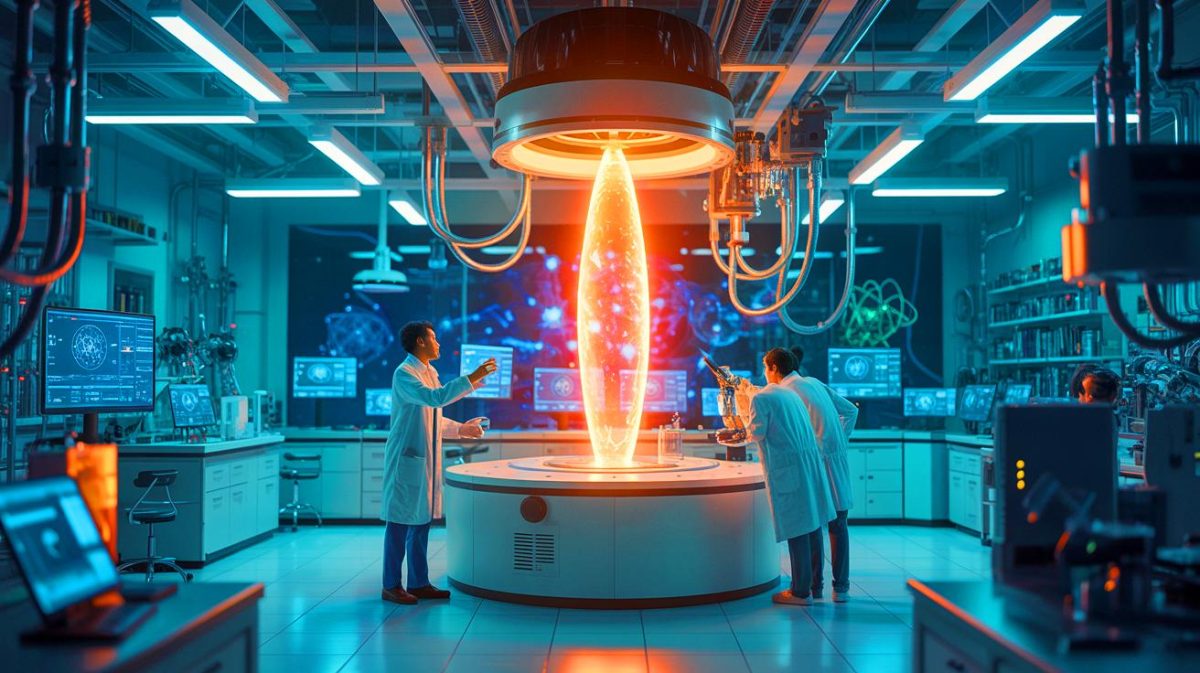| IN A NUTSHELL |
|
Recent breakthroughs in physics have captivated the scientific community, as researchers from the University of Rostock and the University of Birmingham have unveiled a fascinating discovery. They have found a way to generate flashes of light seemingly from the void, fundamentally altering our understanding of how time and space can interact. Published in the renowned journal Nature Photonics, this research opens up exciting possibilities for future technologies. By reevaluating the role of time in physics, scientists are uncovering revolutionary insights that could change the way we perceive the universe. How does time shape the very fabric of reality?
The Unidirectional Nature of Time and Its New Potential
The concept of time has always intrigued physicists, largely due to its unidirectional nature. While we can move freely in space, time only progresses forward, a phenomenon famously described as the “arrow of time” by astrophysicist Sir Arthur Eddington nearly a century ago. Despite its unique qualities, time has traditionally played a secondary role to space in physics. However, recent studies on “spatio-temporal crystals,” structures that repeat patterns in both space and time, have prompted scientists to reconsider the significance of time. According to this groundbreaking research, the unidirectional nature of time could lead to entirely new physical effects.
In carefully orchestrated experiments, researchers have managed to create bursts of light at precise moments in space and time, suggesting that time itself can influence physical laws. This discovery not only challenges our existing understanding but also paves the way for new explorations into the fundamental principles of the universe. The implications of these findings could be far-reaching, potentially leading to advancements in technology and a deeper comprehension of the cosmos.
Harnessing the Power of Mathematical Topology
The creation of these mysterious light bursts is not a random occurrence; it is grounded in the profound principles of topology, a branch of mathematics that explores the properties of space that are preserved under continuous transformations. Professor Hannah Price from the University of Birmingham explains that although topology may seem abstract, it establishes rules that govern physical behavior. These mathematical principles ensure that the light flashes are remarkably stable, a rare quality in the realm of physics.
Topology, by defining the underlying structure of these events, provides a framework that makes the light bursts resistant to external disturbances. This stability is uncommon, as most known states of light are easily disrupted by external factors. The implications of applying topological concepts to physical phenomena could revolutionize our approach to scientific research, offering new avenues for exploration and innovation.
This Light: A New Realm of Stability
Unlike ordinary light, which is susceptible to external perturbations, the light created in these experiments is inherently stable. This stability arises from the unidirectional nature of time, which acts as a shield against random changes or interference from stray light. According to Dr. Joshua Feis of the University of Rostock, most known states of light are vulnerable to such disturbances, making this newfound stability particularly noteworthy.
The inherent protection provided by time’s one-way trajectory ensures that these events remain consistent and reliable. This discovery not only enhances our understanding of light but also has the potential to inform the development of technologies that rely on stable light sources. By harnessing this stability, scientists can explore new possibilities in fields ranging from communications to computing, where precision and reliability are paramount.
Implications for Future Technologies
The potential applications of generating light from the void are vast and varied. As researchers continue to delve deeper into the relationship between time and space, they anticipate that this newfound understanding could lead to groundbreaking advancements in technology. From improving data transmission systems to developing new methods of energy production, the possibilities are endless.
Moreover, the stable nature of this light could revolutionize fields that require highly controlled environments, such as quantum computing and advanced imaging techniques. By leveraging the unique properties of time-influenced light, scientists could unlock new capabilities and push the boundaries of what is currently achievable. As we stand on the brink of these exciting developments, one must wonder: how will this unprecedented control over time and space shape the technologies of tomorrow?
The intersection of time and space has always been a source of fascination for scientists and philosophers alike. With these new discoveries, we find ourselves at the cusp of a new era in physics, where the manipulation of these fundamental dimensions could lead to revolutionary changes in our understanding and interaction with the universe. As we ponder the future, the question remains: what other mysteries will the study of time and space unravel, and how will they transform our world?
Did you like it? 4.4/5 (28)









Wow, light from empty space? That’s like pulling a rabbit out of a hat! 🐰
How exactly do they manipulate time and space to create light? This sounds like sci-fi!
Bravo to the scientists involved! This is a truly groundbreaking discovery. 👏
I’m skeptical. How can you create something from nothing? 🤔
Can this technology be used in everyday applications like smartphones or TVs?
This article is fascinating but quite complex. Could someone explain it in simpler terms?
Does this mean we might finally understand time travel? 😮
Is this discovery safe? What are the potential risks involved?
Not enough detail. Photons without a source – Just another of many articles wrote with improper terminology acting like tiny breakthrough is a huge breakthrough. It’s like the writer of this article didn’t even properly interviewed that scientists if it’s even based on real life at all